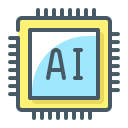Neural Networks in Plain English
A perceptron is a weighted sum with a threshold; stacking many creates layers that learn complex functions. Depth allows compositional understanding. Describe a real-world process that benefits from layers of abstraction, and relate it to deep networks.
Neural Networks in Plain English
Nonlinear activations like ReLU help networks model curves, edges, and nuances. Without them, you’d just get a slightly fancier line. Which activation metaphor resonates—light switches, gates, or spices in a recipe? Share your analogy to help others learn.




